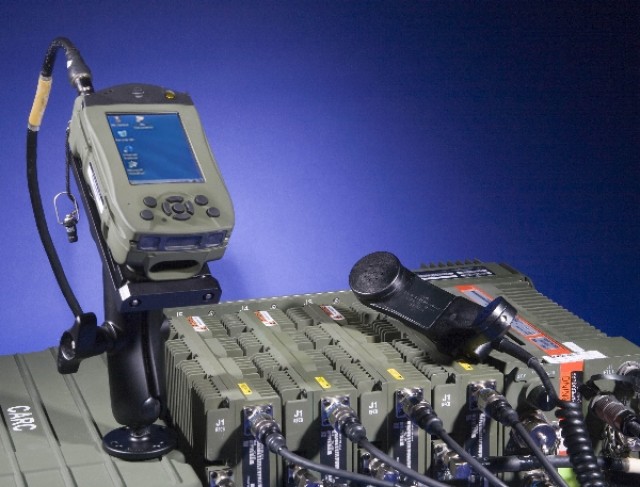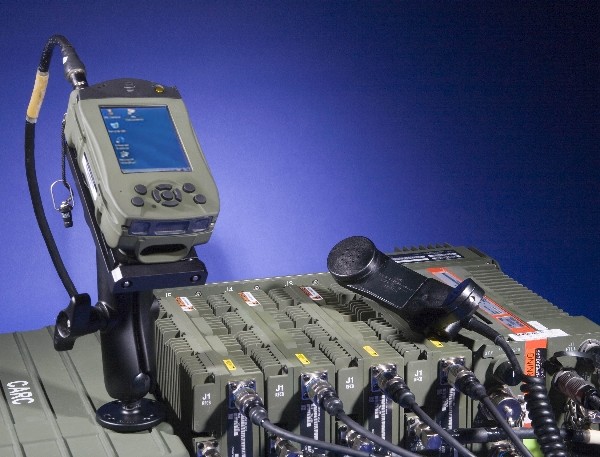The U.S. Army is testing production-representative models of its next generation, vehicle-mounted software programmable radios--Joint Tactical Radio Systems Ground Mobile Radios (JTRS GMR) --- designed to share voice, data, images and video across the force using a variety of waveforms in real time, service officials said.
The GMR radios are showing promise in System Functional Validation testing now underway at Fort Huachuca, Ariz., Army officials said.
The GMR radios are testing new, high bandwidth waveforms designed to move more information faster across units in combat such as Soldier Radio Waveform (SRW) and Wide-bandwidth Networking Waveform (WNW).
"The SRW waveform basically gives us connectivity to all of our sensors. We can pass data from the UAV, Small Unmanned Ground Vehicle (SUGV) and Unattended Urban Ground Sensors," said Luke Peterson, product manager for network systems for PEO Integration.
"For the high speed transmission of data and imagery we use the Wide-bandwidth Networking Waveform (WNW)."
The Army plans to buy at least 153 four-channel JTRS GMR radios which can transmit both legacy waveforms such as SINCGARS as well as SRW and WNW; the Army is already taking delivery of these radios, according to Program Executive Office JTRS officials.
"The re-route and re-transmit capabilities of GMR have many combinations that allow us to pass voice and data from one channel on one waveform to another channel on another waveform. What that does is that links enclaves of communications capability," Lt. Col. Michael Thurston, product manger GMR.
"What GMR brings that no other capability brings to the fight is that it communicates with the legacy waveforms. We add an element of legacy waveforms that you can't get with an individual radio."
Engineered to function as a multi-level security, multi-waveform and multi-channel radio all in one box, JTRS GMR provides a key transport layer of the Army's vehicle-mounted Network Integration Kits (NIK) designed to seamlessly connect robots, UAVs, sensors and networked vehicles to one another in real time on the battlefield. The radios are connected to transceivers, antennas and multi-band filters all designed to transmit data.
JTRS GMR provides the communications backbone for 81 NIKs to be deployed to Afghanistan with Increment 1 technologies in 2012; Increment 1 technologies include the Small Unmanned Ground Vehicle 30-pound robot, the Class I UAS and Urban and Tactical Unattended Ground Sensors along with the battlefield network. The network will give units an unprecedented ability to share real-time, battle-relevant information such as sensor and UAV feeds across the force.
The NIKs, which include an Integrated Computer System, a middle ware operating system called System of Systems Common Operating Environment and a Blue Force Tracker display screen, are designed to network vehicles and units on-the-move.
The NIKs will be able to send information to other NIKs as well as to vehicles without NIKs by using Blue Force Tracker technology, Peterson said.


Social Sharing